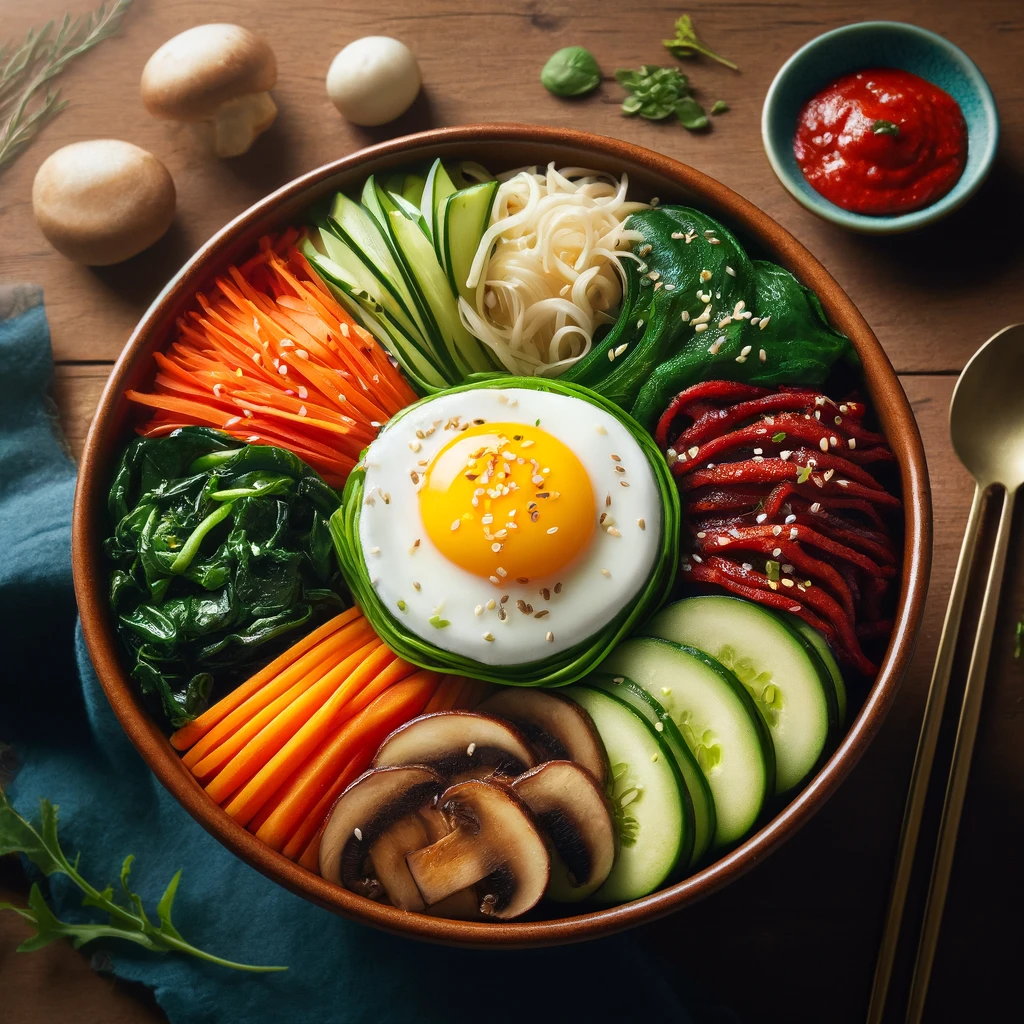Introduction
Bibimbap, a signature Korean dish, translates to “mixed rice” and offers a vibrant combination of flavors and textures. This Spicy Korean Bibimbap version includes a variety of fresh and pickled vegetables, a spicy gochujang-based sauce, and a protein of choice, all served over a bed of steamed rice. Topped with a fried egg, this dish is not only visually appealing but also a complete meal that can be customized to individual tastes.
Ingredients
- 2 cups steamed white rice
- 200 grams beef, thinly sliced (or any other protein like tofu for a vegetarian option)
- 1 carrot, julienned
- 1 zucchini, julienned
- 1 cup spinach, blanched and squeezed dry
- 1/2 cup bean sprouts, blanched
- 1/2 cup shiitake mushrooms, sliced and sautéed
- 1 small cucumber, julienned
- 2 eggs
- Gochujang (Korean chili paste)
- Sesame oil
- Soy sauce
- Garlic, minced
- Sesame seeds
- Salt and pepper
Preparation Steps
- Prepare the Vegetables:
- Sauté each vegetable separately in a small amount of sesame oil and garlic. Season with salt and set aside.
- Cook the Protein:
- Marinate the beef (or other protein) in a mixture of soy sauce, sesame oil, garlic, and pepper. Sauté until cooked through.
- Prepare the Bibimbap Sauce:
- Mix gochujang with a little water, sesame oil, and sugar to taste until it forms a smooth, spicy paste.
- Assemble the Bibimbap:
- Place a serving of rice in a bowl. Arrange the prepared vegetables and protein aesthetically around the rice. Top with a fried egg.
- Serve:
- Sprinkle with sesame seeds. Serve with bibimbap sauce on the side, allowing each person to add sauce to their taste and mix everything together before eating.
Historical Context
Bibimbap is thought to have originated from traditional Korean royal cuisine, where a variety of leftover side dishes were served over rice to make a filling meal. It’s now enjoyed worldwide, with its adaptability to different ingredients reflecting local tastes and preferences.
Nutritional Information
Bibimbap provides a balanced meal, with carbohydrates from the rice, protein from the beef or tofu, and a wide array of vitamins and minerals from the assorted vegetables. The gochujang sauce adds a spicy kick while also boosting metabolism.
Conclusion
Spicy Korean Bibimbap is a delightful, nutritious meal that’s as fun to prepare as it is to eat. Its mix of flavors and textures can satisfy any palate, making it a perfect dish for family meals or gatherings where everyone can customize their bowl.


